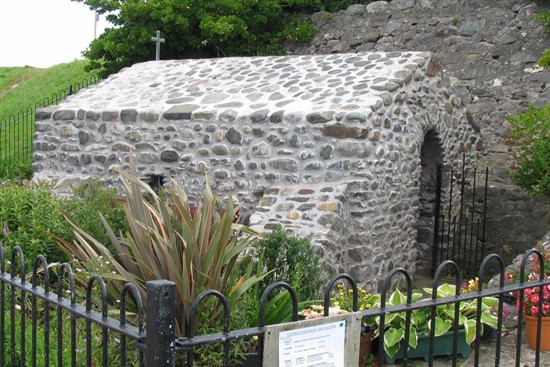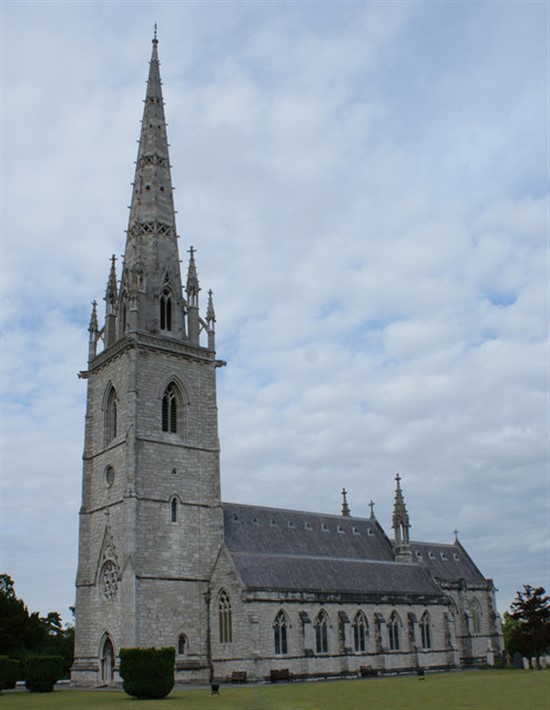Posted on 24/05/2017 by David
North Wales is home to some of the most awe-inspiring churches, holy sites and places of worship that you could ever imagine. From remote monasteries to imposing cathedrals, they all have a rich history and fascinating stories behind them.
In this blog mini-series, we are exploring some of our favourite churches. Why not take some time to visit these beautiful and sacred places, and absorb the sense of tranquility that they bring?
1. St Trillo’s on the Shore - Llandrillo-yn-Rhos (Rhos-on-Sea)

This tiny and rather austere building is thought to be the smallest chapel in Britain, holding just six people at a time. The chapel is named after St Trillo, a sixth century saint.
The chapel that you can visit now, protected by the promenade and the sea wall, was extensively rebuilt at the end of the 19th century. It does, however, occupy the space where St Trillo is said to have built his cell.
It’s a simple stone and mortar building, with integral walls and roof and a heavy wooden door, to protect it from the harsh elements on the sea front.
Trillo hailed from an illustrious and devout family. His father was a warrior-prince of Gaul (now northern France) called Ithel Hael o Llydaw, and all his brothers were made saints for their missionary work with Cadfan, a founding father of the church in Wales.
Like Trillo, brothers Tegai and Llechid founded churches in North Wales. Before setting the foundations for his church at Llandrillo, Trillo was a monk on Bardsey Island, the so-called ‘island of 20,000 saints’ off the tip of the Llyn Peninsula.
Under the chapel is a spring of clear water (Ffynnon Drillo). Pilgrims visited the well in the hope that the sacred water would cure them of their ailments and illnesses. While there doesn’t appear to be any records of it healing anyone, the well supplied holy water for baptisms across the parish of Llandrillo for centuries.
Despite being small in stature, the chapel is still in use today. Every week, a rather intimate Eucharist service is held here. It may not be the most grand or ornate church, but it’s worth a visit for its ancient connections and rustic charm.
2. St Margaret’s Church, Bodelwyddan

Visible from miles around thanks to its distinctive 62 metre high spire, St Margaret's Church in Bodelwyddan is a landmark of North Wales.
The ornate interior of this impressive church is made up of no less than 13 different kinds of marble - no wonder it's better known as the Marble Church!
Built between 1856 and 1860, St Margaret's was commissioned by Lady Margaret, daughter of Sir John Williams of Bodelwyddan Castle. She had married a baron from Warwickshire but came home to North Wales following his death in 1852.
Lady Margaret wanted to build a brand new church in his honour, but her chosen site was part of the parish of St Asaph, which already had a church. The Bishop of St Asaph agreed to her request, on condition that a new parish was created, and so Bodelwyddan Parish came to be.
The church was designed by John Gibson, best known for his work on the Houses of Parliament. Gibson had a penchant for the ornamental style and St Margaret's was an opportunity for him to flex his creative muscles. He is said to have wanted to create something unique and impressive; well, he didn't fail there.
Limestone used in the construction of the church was quarried in nearby Llanddulas - it's bright silver quality earned St Margaret's the nickname the Pearl of the Vale but time and pollution have tarnished its exterior to a dull, but still impressive, grey.
But the story of the Marble Church doesn't end there; the pretty church has a dark side too. The graveyard of St Margaret's is the final resting place of some 80 Canadian servicemen.
Close to the church is Kinmel Park, an army training camp that saw two world wars and ceased operations in the 1960s. The camp was the scene of a riot when over 15,000 battle-scarred Canadian soldiers rebelled against the appalling conditions they were stationed in.
Of the 80 graves, many are the victims of an outbreak of Spanish Flu that tore through the camp, but several are believed to be the graves of Canadian service personnel executed for their part in the riot in 1919.
Click here to read part three in the series.
Images Courtesy of: St Trillo’s Chapel © Copyright Ian S and licensed for reuse under this Creative Commons Licence. St Margaret's Church by Ian Greig, via Wikimedia Commons

